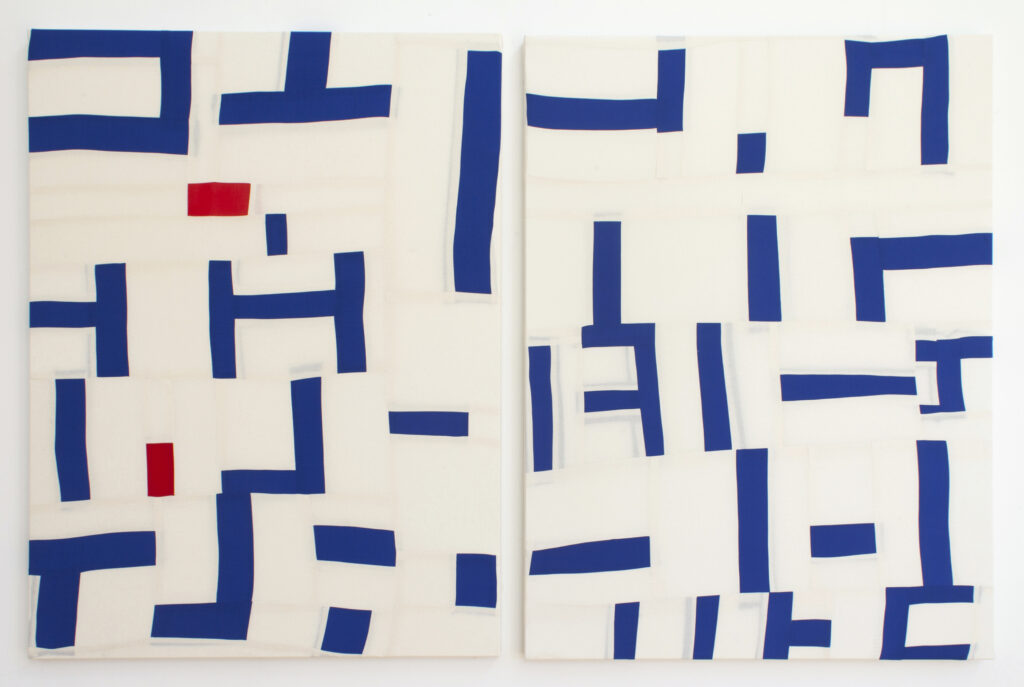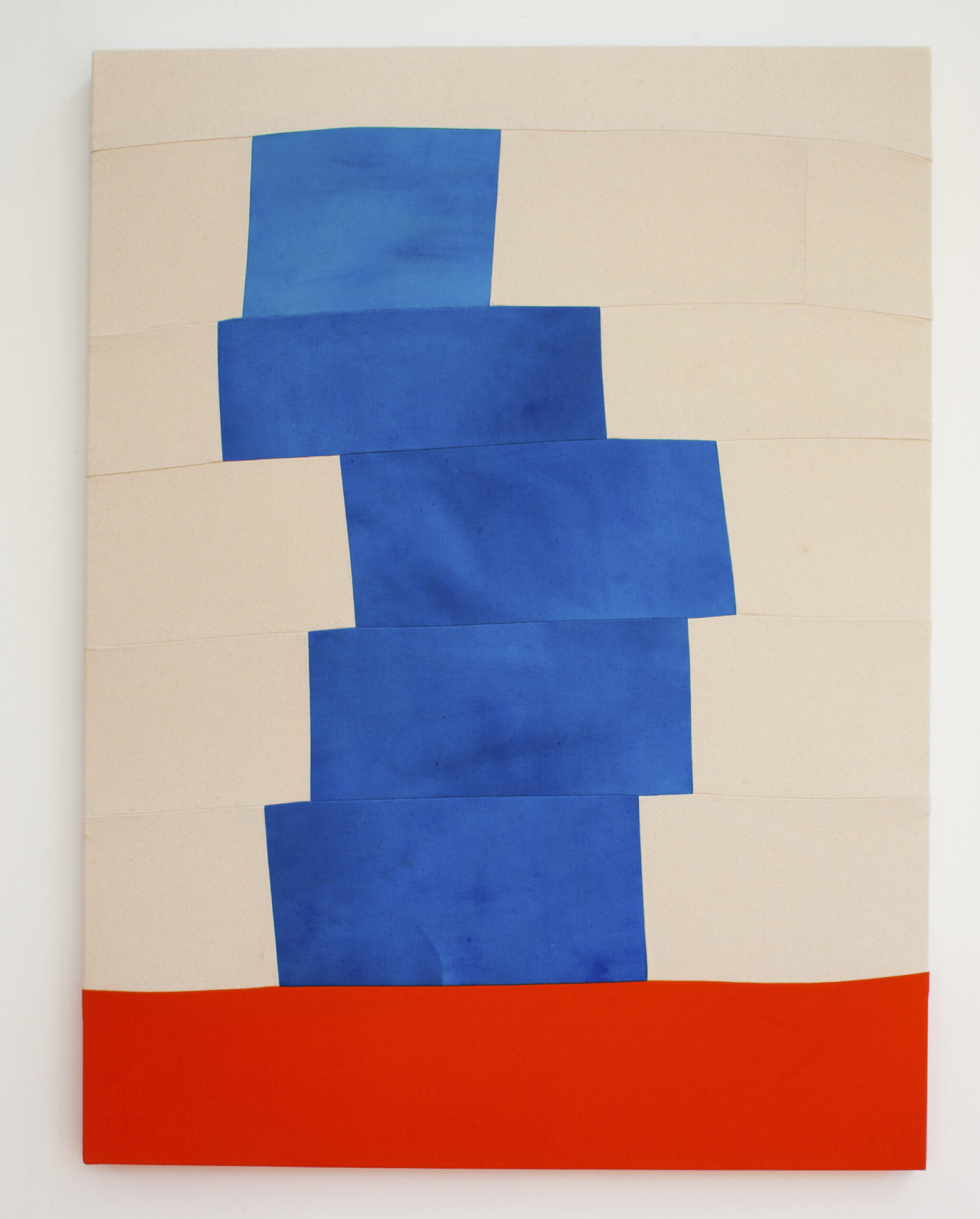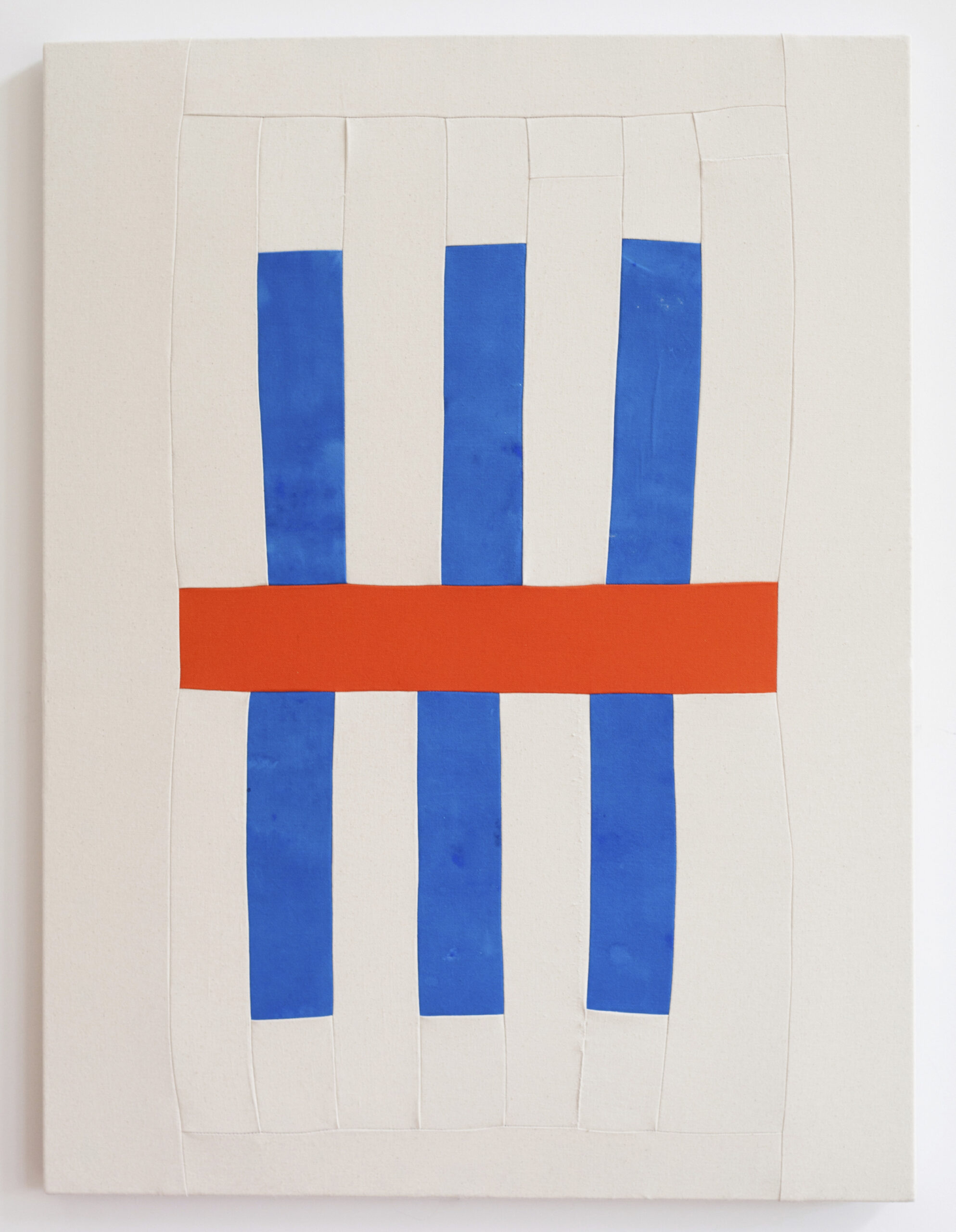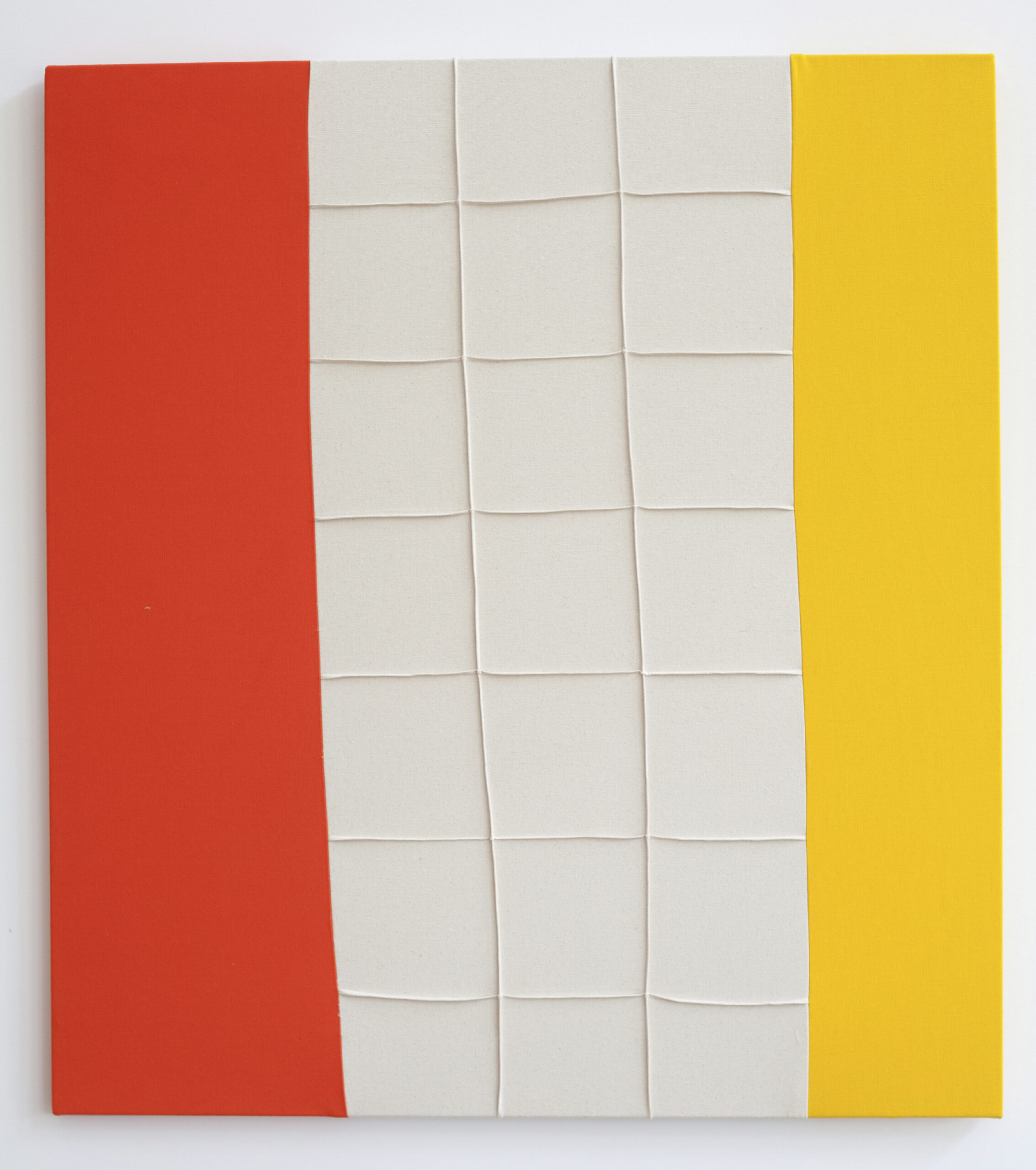
Bastienne Schmidt refuses to let her artistic practice be put in a box. “For me, it’s very important to have range,” she says. “I can go from doing something feminist, or even feminine, to something that’s considered very masculine—I have the aptitude to do whatever I choose to do.” Schmidt has produced award-winning art in various media, including photography, documentary filmmaking, painting, land art, installation art, and drawing, but for the past 10 years, she’s “been playing with the idea of geometry inspired by Bauhaus ideas, using everyday materials.” For her most recent project, a series called “Colored Grids,” Schmidt cuts pieces of painted canvas and stitches them into geometric arrangements, often with a grid-like pattern visible in the background.
Her work is also inspired by her international upbringing—Schmidt was born in Germany but grew up in Greece and Italy. Her father was an archaeologist, and “seeing him work,” she says, “putting different pieces of terracotta together as a mental puzzle, influenced my way of working.” She constructs each of her “Colored Grids” pieces as a sort of improvised Tetris game, intentionally juxtaposing rigid, mathematically precise shapes with natural, organic materials—allowing the viewer to reflect on structure and form, order and spontaneity. “It’s playing with ideas of yin and yang,” she says. “The end result is mostly a painting, but it’s done with all of these different materials.” She favors primary colors for the canvases; she began the series, she used only a deep cerulean blue pigment atop raw cotton canvas to evoke the water and skyline of her childhood in Greece, where textiles are commonly reused.




